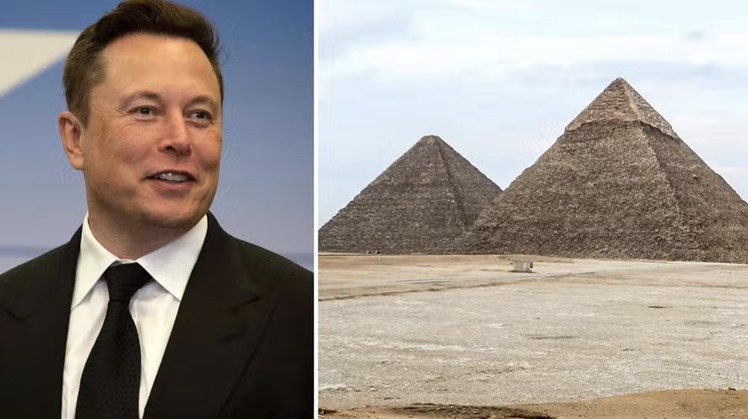There is no doubt that the ancient Egyptian civilization is the focus of attention of the world, as it is able to charm human eyes with its beauty and accuracy in its implementation at the hands of the ancient Egyptians. Just a moment, the famous billionaire Elon Musk, the owner of Twitter and founder of SpaceX and Tesla, recently commented on the ancient Egyptian civilization and his admiration for it, in a tweet on the micro-blogging site "Twitter", where he expressed his admiration for a video clip of the Dendera Temple in Qena, which sparked websites Communication in Egypt and the world, where the matter has become one of the most discussed topics among the activists of the communication sites, as the comment of the owner of Twitter was widely popular, and won the admiration of thousands of people, and the Egyptians considered it a celebration and admiration for the civilization of ancient Egypt.
The history of Dendera dates back to the pre-dynastic era in ancient Egypt, as evidenced by the ancient cemeteries near the wall of the Temple of Hathor, where Dendera was the capital of the sixth region of Upper Egypt and the trinity "Hathor, Hor-Behdati, and Hor-Ehi" were worshiped there.
The city of Dandara was mentioned in ancient Egyptian mythology, as it was the scene of one of the battles that took place between Hor, the god of Edfu, the husband of Hathor, the goddess of Dandara, and Set, the evil god who killed Osiris, Hor's father.
The first origins of the temple go back to the era of the Fourth Dynasty, where King Khufu built a temple in this place, which was restored and some additions were made to it during the reign of King Pepi I of the Sixth Dynasty.
To the south of the temple, a cemetery was found containing tombs in the rock, some of which belonged to the rulers of the province who were associated with the service of the goddess Hathor, and some of them bore important titles. Ramesses II and Ramesses III.
As for the current temple, it dates back to the Greek and Roman eras, starting from the reign of Ptolemy IX "Soter II" who ruled in the year 116 BC and ended during the reign of the Roman Emperor Trajan in the year 117 AD. In addition to the main temple, the area includes the wall and the temple of the Divine Birth, whose construction began during the reign of the king. "Nakht Nebf" the first of the 30th family, as well as the temple of the second divine birth, which was built during the reign of Augustus and a facility that turned into a church and a sanatorium for hospitalization, then there is the temple of the goddess Isis, the sacred lake and the Nile scale, and the Dendera temple is considered a sign in architecture and a unique example in the arts and a comprehensive book of Egyptian religious thought In this period, in addition to being one of the best-preserved Egyptian temples, according to research published on the page "Ancient Egypt... Kemet... The Black Land."
The external and internal walls of the temple contain hundreds of important scenes and texts that shed light on religious beliefs. The temple is also distinguished as a great facility, as well as for the views and texts. For example, there are the magnificent Hathor crowns and scenes of the heavenly constellations that adorn its ceilings, the legend of the union of Hathor with the sun disk, and the cabin of the goddess Nut, the sky goddess. Which was not represented in any trace in Egypt as it was represented in this temple.
We also find in the temple of Dendera the basement "corridors perforated under the level of the floor of the temple," which was dedicated to preserving the ritual tools of the goddess Hathor, then the stairs leading to the roof of the temple, which spreads awe in the souls of the ascenders through the darkness penetrated by a dim light from the side niches.
And on the roof of the temple, we see the cabin of Hathor’s union with the sun disk, then the rooms that represented on its walls the story of the death and resurrection of Osiris and the circular zodiac that settled in the Louvre Museum. Caesarion and they worship the goddess.
 Sun, Jan. 15, 2023
Sun, Jan. 15, 2023